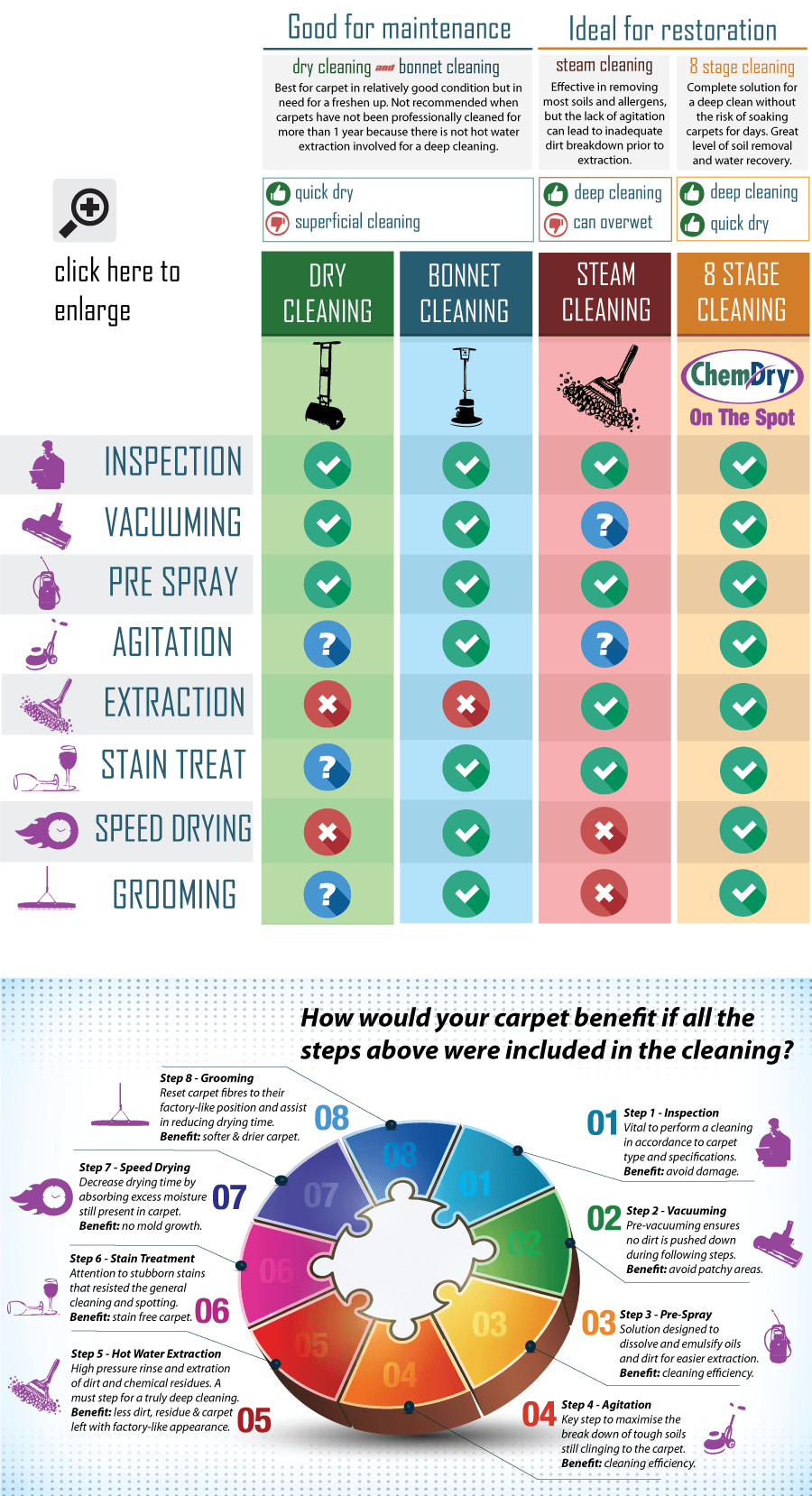Analyzing The Ecological Footprint Of Carpeting Cleaning: Important Points To Consider

Post Author-Lundgaard Mccormick
When assessing the environmental influence of rug cleansing, you have to be mindful of the various variables that enter play. From the chemicals existing in cleaning up remedies to the amount of water made use of and the energy taken in, each element holds relevance. Think about exactly how these elements interplay with sustainability and the eco-friendly impact left. By being conscious of these factors to consider, you can make educated choices that straighten with eco liable techniques.
Chemicals in Cleaning Products
When it comes to the ecological effect of carpeting cleaning, one crucial element to think about is using chemicals in cleansing items. These chemicals, frequently containing harsh active ingredients like ammonia, chlorine, and synthetic scents, can have destructive impacts on the atmosphere. When these chemicals are washed away during the cleansing procedure, they can wind up in rivers, polluting water environments and harming wildlife.
Additionally, the manufacturing and transport of these chemical-laden products add to air pollution and greenhouse gas emissions.
To decrease the ecological impact of rug cleaning in this regard, take into consideration going with eco-friendly cleaning items. Look for items labeled as naturally degradable, safe, and made from all-natural components. These choices are safer for the atmosphere and for your health.
Additionally, utilizing related resource site like steam cleaning or dry carpet cleaning can decrease the demand for chemical-based products entirely. By making have a peek here regarding the cleaning products you use, you can help minimize the unfavorable influence on the environment.
Water Consumption
Thinking about water usage is an important aspect of checking out the environmental impact of carpeting cleansing. Rug cleaning processes frequently call for substantial quantities of water, especially for methods like heavy steam cleaning or hot water extraction. These strategies involve spraying water onto the carpeting to loosen up dust and spots, complied with by removal to remove the water together with the dust. The water utilized in these processes can vary relying on elements such as the size of the carpet area and the degree of cleaning required.
Excessive water usage throughout carpet cleaning can lead to numerous ecological issues. To start with, it adds to water wastefulness, particularly in regions facing water deficiency. In addition, the wastewater generated during the cleansing process may consist of contaminants like chemicals and dirt, possibly contaminating water resources if not correctly gotten rid of or treated.
To reduce water usage and its ecological effect, consider opting for rug cleansing approaches that are a lot more water-efficient, such as dry rug cleansing or low-moisture strategies. By choosing lasting practices, you can minimize the water footprint of carpeting cleaning and decrease its environmental consequences.
Energy Use
Reducing energy usage is an essential variable to examine when examining the ecological impact of carpet cleaning. The tools made use of in carpeting cleansing, such as vapor cleansers and vacuum cleaners, often count on power to operate effectively. Selecting energy-efficient machines can substantially reduce the carbon footprint of the cleaning process. Look for equipment with power celebrity qualification or reduced power usage scores to ensure you're making eco conscious options.
Additionally, organizing cleaning sessions throughout off-peak hours can help in reducing the total power intake. This not only profits the atmosphere however can likewise lead to cost savings for the cleaning company company and ultimately for the customers.
Being mindful of power use throughout carpeting cleaning can contribute to a much more sustainable method in general. Consider using natural light or energy-saving light bulbs in the cleaning area to even more decrease energy intake. By making small adjustments to your cleaning routine, you can make a large impact on decreasing the power footprint of carpeting cleaning procedures.
Verdict
In conclusion, when it comes to carpet cleaning, it's important to think about the environmental effect of the chemicals in cleansing items, water usage, and energy usage. By choosing environmentally friendly items, using water-efficient methods, and opting for energy-efficient tools, you can aid reduce your carbon impact and advertise sustainability in your cleansing techniques. Make mindful selections to secure the setting while keeping your carpets clean.

